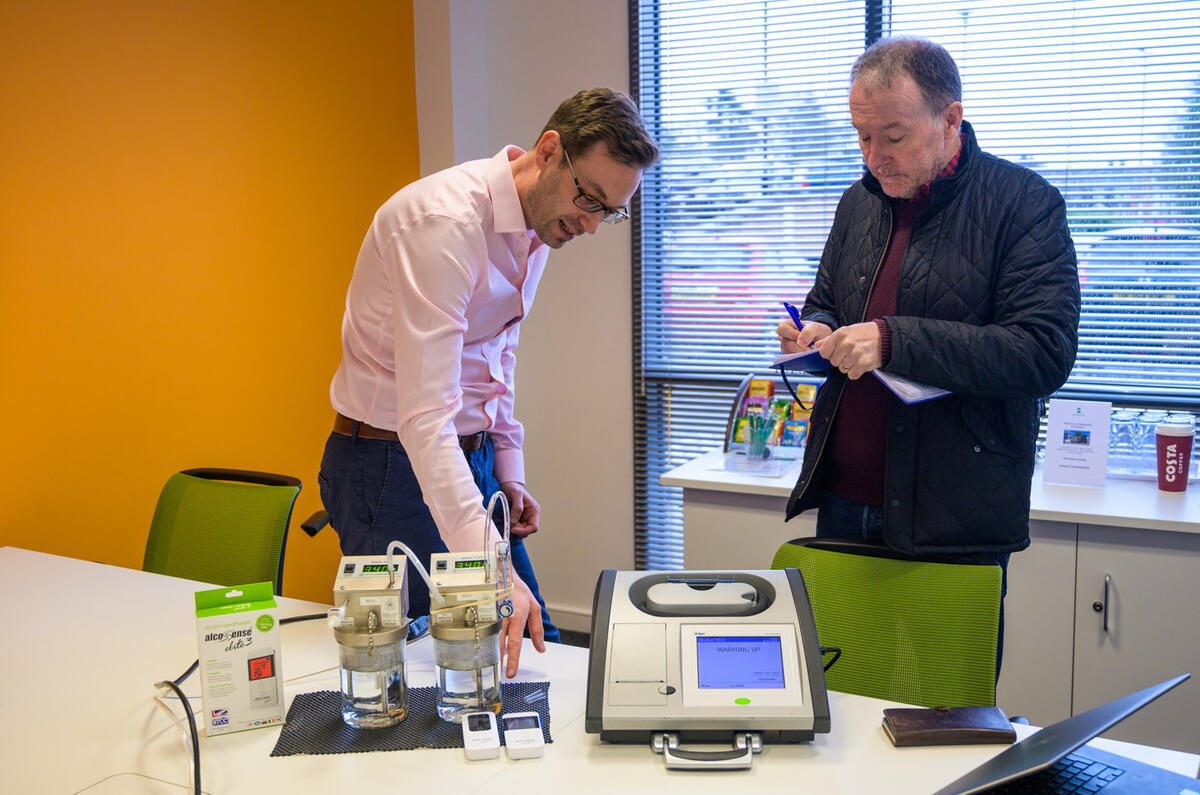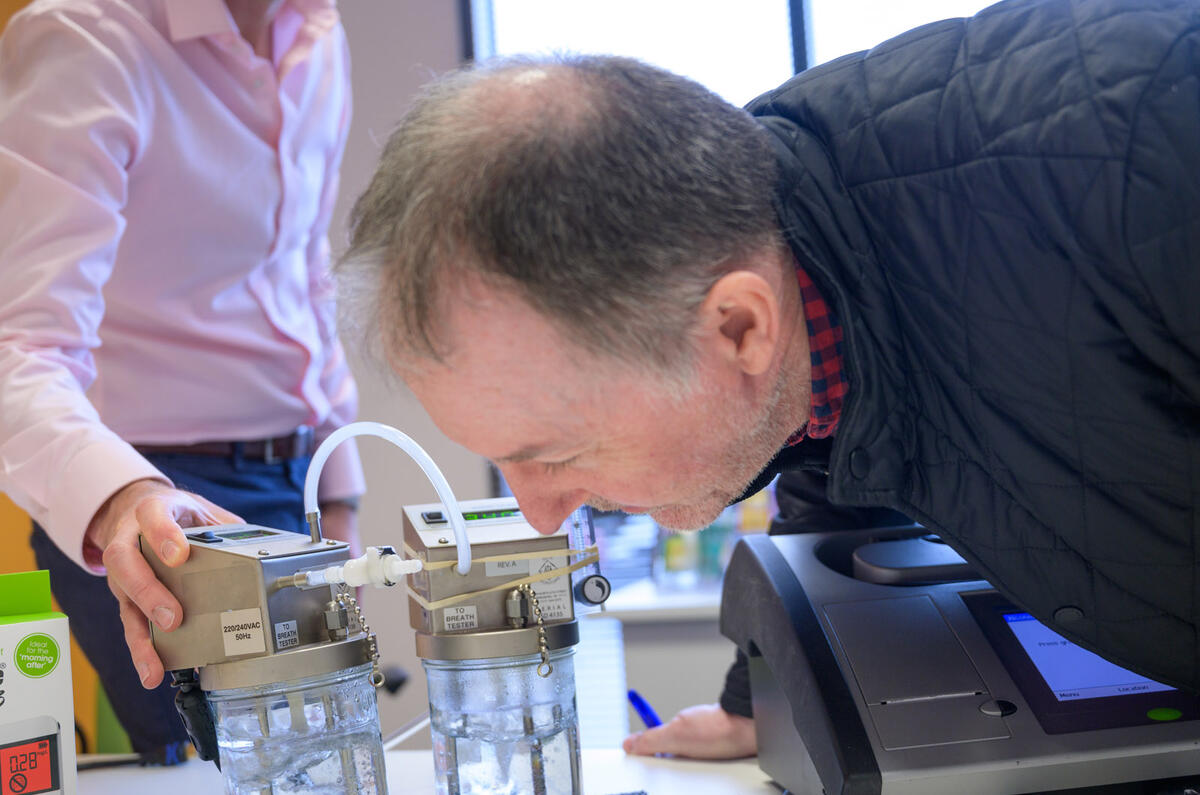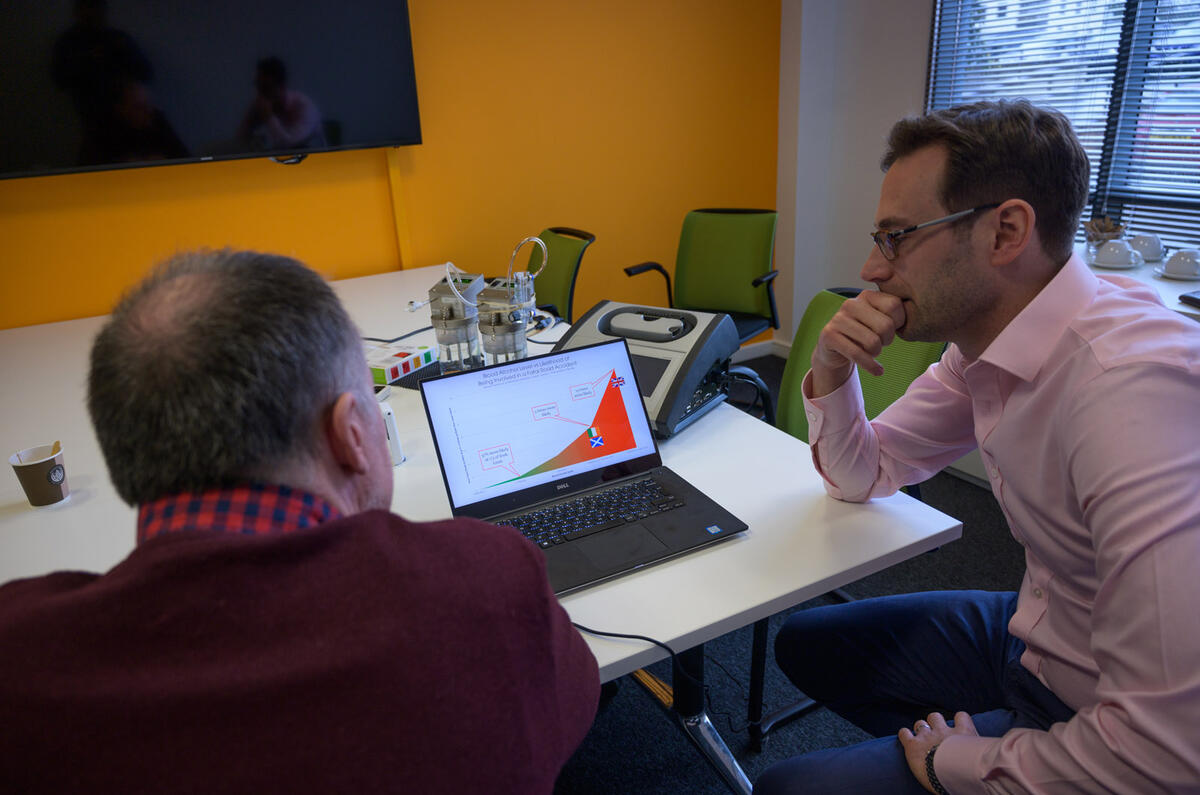Drink-driving is a frustratingly consistent taker of life. According to the latest figures released by the Department for Transport, since 2010 around 240 people have been killed each year in road accidents where at least one driver was over the limit. The figure represents 14% of all road deaths. Experts say a further 50 deaths can be added for accidents where a driver was just below the limit.
Experts claim that attempts to reduce the number have been thwarted by, for example, cuts to the Department for Transport’s budget for its Think! road safety campaigns, down from £3 million in 2009 to around £250,000 each year since 2014. “Successive government austerity policies have hit hard,” says David Davies, executive director of the Parliamentary Advisory Council for Transport Safety (Pacts). “The cuts to Think! have meant no more mass TV campaigns but then government would say social media is more effective. You can always do more with more, though.”
The government’s faith in social media may be misplaced. A quick check of Think!’s latest Facebook campaign featuring Pint Block, a film that urges friends not to allow a mate who’s been drinking to drive, reveals that it has been shared only a few times. Davies also suggests drink-drive casualty rates may be flatlining because of the emergence of beers and wines with a stronger alcohol content. A report published by the Department of Health in 2014 showed that average alcohol content rose from 7.25% to 7.31% between 2011 and 2012. Today, craft beers containing more than 6.5% ABV are common while gin, whose alcohol content typically exceeds 40%, is making a big comeback.

The content of some wines is often as high as 15%. Research by the Organisation for Economic Co-operation and Development (OECD) indicates that Britons, especially those over 50 years of age, are now the biggest wine drinkers in the Western world. Among them is a growing subset of middle-aged women or what Davies calls “wine o’clock” drinkers.
Another reason casualty numbers may be unchanged, says Davies, is the reduction in overall police numbers since 2010. On that point, a 2017 report by the Institute of Alcohol Studies (IAS) called ‘Running on empty: Drink-driving law enforcement in England’ says that following a reduction in the average roads policing budget of almost £1m per force between 2011 and 2016, the number of dedicated roads police officers fell by 27% and there were 25% fewer breath tests. Had breath testing been maintained at 2011 levels, it says, there would have been over a quarter of a million (260,681) more tests performed during this period.
In response to the report’s findings, the RAC said that data compiled on drivers’ habits found around five million of them admitting they may have got behind the wheel while over the legal limit once in the preceding 12 months.
This seems like an unbelievably high figure but unfortunately the drink-drive debate is dogged by questionable statistics, claims and counter-claims. For example, one drink-drive expert I spoke to claimed the latest Department for Transport figures show the number of people killed in road accidents where a motorist was over the drink-drive limit has risen 25% in two years – from 200 deaths to 250. However, Davies advises against using the figure of 200 deaths, recorded in 2015, in this way since it’s a statistical outlier that can’t be relied upon.
Meanwhile, two alcohol addiction experts contradicted each other on matters as fundamental as how the body processes alcohol and adapts to its long-term consumption, while one of them suggested the other’s links to the temperance movement may have coloured their judgement.

At least England’s drink-drive limit cannot be disputed. It’s 80mg of alcohol per 100ml of blood. If you’re stopped by the police, breathalysed and found to be over that, you may receive a three-month prison sentence, a £2500 fine or a driving ban. These penalties also apply in Wales and Northern Ireland. In Scotland, the limit is lower, at 50mg per 100ml of blood. Penalties include a minimum 12-month driving ban, up to six months in prison and an unlimited fine.
The stubborn refusal of drink-drive-related deaths to fall below 240 a year since 2010 has led safety campaigners to call for England’s alcohol limit to be reduced in line with Scotland’s. Even then, it would be among the highest in the world. For example, Norway’s and Poland’s limit is 20mg.
“The law and society’s condemnation of drink-driving have succeeded in discouraging the casual drink-drivers,” says Dr Peter Rice, a psychiatrist and trustee of the IAS. “Now we have to target the hardcore of repeat offenders, some of them older drivers. Lowering the limit to 50mg in England would send out a strong message to these people.”
In England, the average drink-driver is twice the legal limit and Davies is not convinced that, on its own, lowering the limit would achieve the hoped-for reduction in drink-drivers and casualties: “Unless you step up enforcement, you’re not going to succeed. In Scotland, they cut the limit supported by a big awareness campaign but their roads policing didn’t change much and research has not shown a reduction in casualties. So cutting the limit in England would not necessarily save lives. What will is more enforcement."
We try a one-off breathalyser experiment at home
An individual’s sex, age, height and weight affect how they process alcohol. That said, most of us do so at the rate of one unit, or 8mg, every hour. A large, 250ml glass of average-strength wine (12% alcohol) or a pint of higher-strength lager (5.2%) contains three units.
But how do these units relate to the way we feel and the breathalyser reading we provide? I, a 59-year-old male, 1.8m in height and weighing 76kg, tried to find out using a 175ml wine glass, a bottle of Rioja containing 13.5% alcohol, a hearty meal and a state-of the-art breathalyser called the AlcoSense Elite 3. It’s aimed at the morning-after driver but I figured it would do as a guide. Here’s what happened…

17.45: Begin to drink my first 175ml glass, equivalent to 2.95 units of alcohol.
17.50: Feeling pleasantly numbish. When you drink on an empty stomach, the alcohol is absorbed into the blood stream very quickly. You also have a slightly higher alcohol reading than when drinking with food.
18.40: Second glass of red wine but now with food (sausage, mash and veg).
19.25: First AlcoSense reading – 23mg of alcohol per 100ml of blood. Feeling good but becoming opinionated. According to experts, my reaction times and cognitive abilities are reduced and I would be around 50% more likely to be involved in a fatal crash. This reading would be over the drink-drive limit in many European countries.
20.00: Third glass of wine.
20.30: Second AlcoSense reading – 46mg. Convinced I am thoroughly great company. Food is slowing the absorption of the alcohol into the blood stream. At 50mg, I am five times more likely to be involved in a fatal road accident than when sober. Still not at the Scottish and Irish limit but, judging by how I feel, I would not drive anyway.
21.40: Third AlcoSense reading – 30mg. Still feeling confident but also still processing alcohol that’s entering my blood stream.
22.40: Fourth AlcoSense reading – 27mg. A full hour after the last test and two hours since I stopped drinking, the reading has barely moved because new alcohol is still entering my blood from my stomach.
07.15: Final AlcoSense reading – 0mg. Experts reckon the last alcohol would have been removed at 03.00. They also say that had I not eaten, my peak reading would have reached somewhere around 80mg but that I would have probably cleared the alcohol from my system by midnight.
READ MORE
Less enforcement cited as reason for no significant drop in drink-driving deaths since 2010
The most dangerous things you can do in a car
Drink-driving - how motorists are falling foul of 'morning after' offences















Join the debate
Add your comment
Lowering the DD limit
A lower or zero limit would just catch (and ruin the careers of) the responsible couple that go out for a meal or whatever, who just want a tipple with their grub.
Cue the 'so you think it's responsible to go out, have a drink and drive home do you...?'
Outraged of planet zog.
No to drink.
So, to conjecture, if all drinks were alcohol free, would we all stop drinking them?, or if all the fast food chains went to vegetarian only, would they go out of business?, you don't need strong drink to enjoy yourself, and fast food in excess is bad for you.
Surely it is perfectly simple
If you have had a drink, don't drive. If you know you will need to drive, don't drink.
If you got p*s*ed last night, don't drive until tomorrow.
If you drove to the pub, why? Get a cab.
Rocket Science it ain't.
The opening comments
I found those test results quite shocking, as I wouldn't drive after 3 glasses of wine with a meal, I wouldn't feel fit to, yet that implies he would have passed a breathalyser, so maybe our limit does need to be reduced. There should be nothing wrong with a drink with a meal but maybe the drink manufacturers should start to produce more lower alcohol versions of their most popular drinks rather than the current trend which, as stated in this article, is higher strength drinks. There are quite a few nearly zero alcohol beers available now in supermarkets, some are very nice, peronni and Budweiser are two I like, but there seems to be too few available at pubs.
Too much?
So, just make some drink low or zero alcohol?, why not just make them all alcohol free?, would the drinks industry go out of business overnight?, and, do we really have to have lots of booze to enjoy ourselves?
@ Peter Cavallini
....you could Peter, however it would mean that some people of either sex would never lose their virginity :-)
Lol